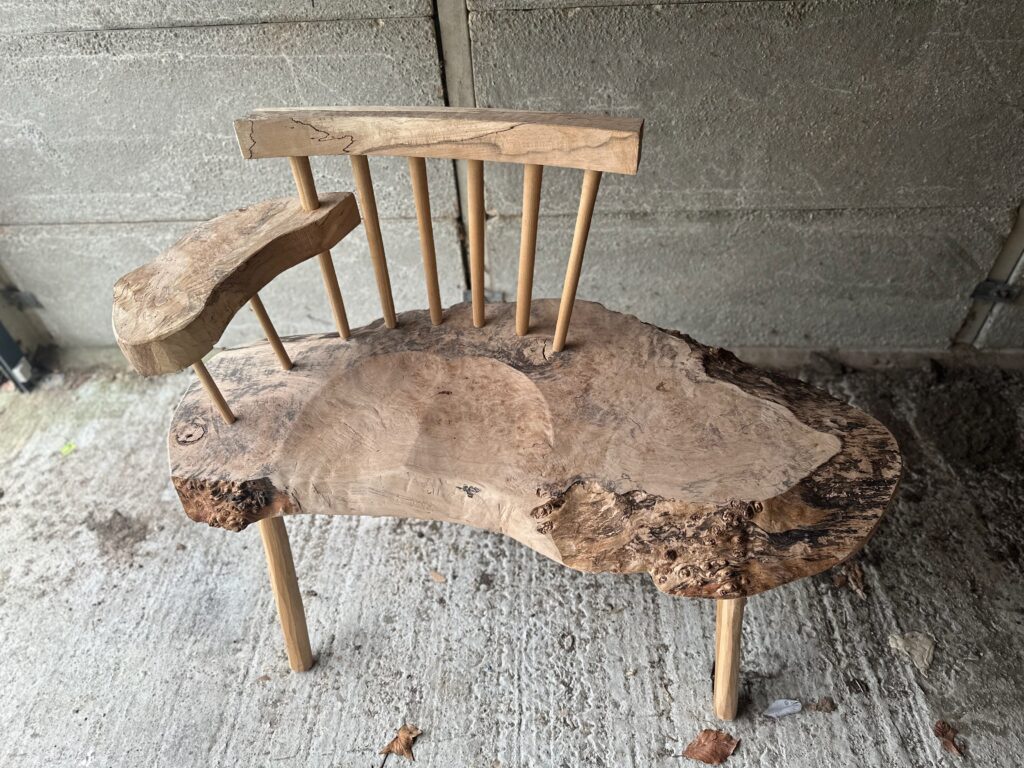
A pole lathe is a traditional woodworking tool used for turning wood to create round or cylindrical shapes, such as spindles, chair legs, bowls, and other objects. Unlike modern power lathes that are driven by electricity or other power sources, a pole lathe is operated manually using human power.
The basic components of a pole lathe include:
1. Lathe Bed: This is a long, horizontal beam or bed made of wood or metal, on which the workpiece is mounted.
2. Headstock: The headstock is the fixed end of the lathe where one end of the workpiece is secured.
3. Tailstock: The tailstock is the movable end of the lathe, and it supports the other end of the workpiece.
4. Pole: A long wooden or metal pole is used as a springy lever to power the lathe. One end of the pole is anchored to the ground, while the other end is connected to the treadle.
5. Treadle: The treadle is a foot-operated pedal that is attached to the pole. The operator pushes down on the treadle with their foot, which causes the pole to flex and provides the rotational power to turn the workpiece.
6. Tool Rest: A tool rest is placed parallel to the workpiece and provides a support for the cutting tools. It allows the woodworker to control the depth and shape of the cuts.
7. Cutting Tools: Chisels, gouges, and other cutting tools are used to shape the wood as it rotates on the lathe.
To use a pole lathe, the operator stands in front of the lathe and alternates between pushing down on the treadle and releasing it. This up-and-down motion of the treadle causes the workpiece to rotate rapidly, and the woodworker uses the cutting tools to shape and form the wood as it spins.
Pole lathes are often used in traditional woodworking and green woodworking because they are simple, low-tech, and rely on human power. They are favored by some woodworkers for their sustainability and the close connection they provide to the woodworking process.

A bodger, in the context of woodworking and furniture-making, historically referred to a skilled craftsman who specialized in making chair legs and other turned wooden parts using a pole lathe. The term “bodger” is primarily associated with 18th and 19th-century rural England, particularly in the Chiltern Hills region.
Bodgers were often itinerant woodworkers who worked in the woods, typically beech woodlands, where they would harvest timber and then use their pole lathes to turn the wood into chair legs, spindles, and other components needed for furniture production. These turned components were then sold to chairmakers and furniture manufacturers to assemble into chairs and other wooden products.
The term “bodging” was derived from the word “bodge,” which means to make something in a rough or makeshift way. However, bodgers were highly skilled craftsmen known for their ability to produce finely turned and consistent wooden parts. They played an essential role in the production of traditional English country furniture.
Bodging was a cottage industry and a way of life for many in the Chiltern Hills and other wooded areas of England. The craft eventually declined with the rise of industrialization and the introduction of more mechanized methods of woodworking. Today, the term “bodger” is often used nostalgically to refer to these traditional woodworkers who were an important part of England’s rural heritage.
